For Product Registration and general enquires please contact us
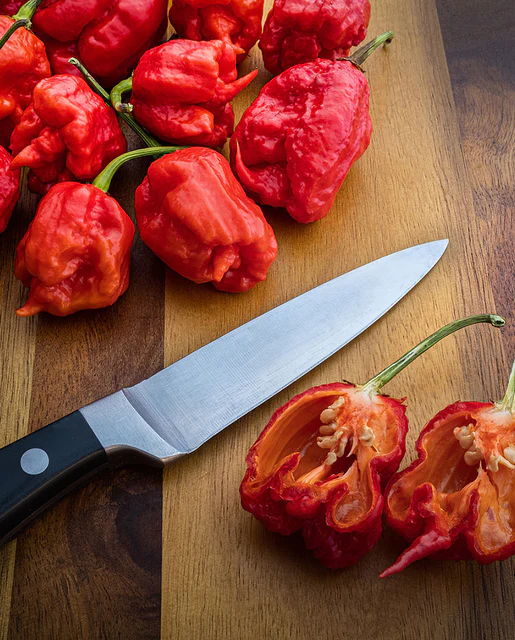
Carolina Reaper
$12.59 – $81.99
The Carolina Reaper is officially the hottest pepper on record, with an alarming 1.5 million Scoville Heat Units, and has peaked at 2.2 million.
Shipping & Returns
West Coast Seeds ships anywhere in North America. However, we are not able to ship garlic, potatoes, asparagus crowns, bulbs, onion sets, Mason bee cocoons, or nematodes outside of Canada. We regret, we cannot accept returns or damages for orders outside of Canada. The minimum shipping charge to the US is $6.99.
Description
More details about Carolina Reaper
C. chinense. The Carolina Reaper is officially the hottest pepper on record, with an alarming 1.5 million Scoville Heat Units, and has peaked at 2.2 million. The smallish peppers mature from green to fire engine red, and are gnarled and bumpy with a distinctive pointed tip some growers call “the stinger.” This species of pepper can be grown as a perennial in warmer climates (or heated greenhouses), or brought inside over winter. They are somewhat challenging to grow. Please take extreme caution when handling the seeds and eventual fruits they produce. Super hot peppers can be somewhat challenging to grow. The seeds can be difficult to germinate and they need a long, hot season to produce fruit. Start indoors early and use bottom heat and seedling domes to create the warm, humid conditions they need to germinate. Be patient as germination may take 21-28 days or longer, even under ideal conditions. Please use extreme caution when handling the seeds and fruits! Matures in 120 days. (Open-pollinated seeds).-
- Averages 1.5 million SHUs
- Hottest pepper on record
- Matures in 120 days
- Open pollinated seeds
All About Carolina Reaper
Latin
Capsicum annuum, C. baccatum, and C. chinense
Family: Solanaceae
Difficulty
Moderately difficult
Season & Zone
Season: Warm season.
Exposure: Full-sun
Timing
Peppers need plenty of time to mature before they will bloom and set fruit. Start indoors six to eight weeks before the last frost date, and grow under bright lights. Transplant only when weather has really warmed up. Night time low temperatures should be consistently above 12°C (55°F) before hardening off pepper plants and transplanting outdoors. Soil temperature for germination: 25-29°C (78-85°F). Seeds should sprout in 10 – 21 days.
Starting
Sow indoors 5mm-1cm (¼-½”) deep. Keep soil as warm as possible. Seedling heating mats speed germination. Try to keep seedlings at 18-24°C (64-75°F) in the day, and 16-18°C (61-64°F) at night. Before they become root-bound, transplant them into 8cm (3″) pots. For greatest possible flower set, try to keep them for 4 weeks at night, about 12°C (55°F). Then transplant them into 15cm (6″) pots, bringing them into a warm room at night, about 21°C (70°F).
Days to Maturity:
From transplant date.
Growing
Soil should have abundant phosphorus and calcium, so add lime and compost to the bed at least three weeks prior to transplanting. Mix ½ cup of balanced organic fertilizer beneath each plant. Though peppers will tolerate dry soil, they will only put on good growth if kept moist. Harden off before planting out 30-60cm (12-24″) apart. Five gallon containers also work well, but require good drainage and regular irrigation. Using plastic mulch with a cloche can increase the temperature by a few degrees. Pinch back growing tips to encourage leaf production. This helps shade the developing fruits and prevents sun-scald in hot summers.
Harvest
When the fruit is large and firm it is ready to pick. Or wait for the fruit to ripen further turning red, yellow, brown, or purple. The sweetness and vitamin C content go up dramatically as the fruit changes colour. If you pick green, the total numbers of peppers harvested will increase. Fruit that sets after late August will not usually develop or ripen. Pull out the entire bush just before the first frost and hang it upside down in a warm, dry place to ripen hot peppers.
Seed Info
In optimal conditions at least 65% of seeds will germinate. Usual seed life: 2 years.
Diseases & Pests
To prevent rot and wilt, plant in well-drained soils and follow a strict 4-year crop rotation.
If cutworms are a problem, use paper collars at the plant base. Tobacco mosaic virus (TMV): young growth is malformed and leaves are mottled with yellow. To prevent it: wash hands after handling tobacco (including Nicotiana), before touching peppers. Control aphids, which spread the disease.
Companion Planting
Pepper plants make good neighbours for asparagus, basil, carrots, cucumbers, eggplant, endive, oregano, parsley, rosemary, squash, Swiss chard, and tomatoes. Avoid planting them next to beans, Brassicas, or fennel.
More on Companion Planting.Read more About Peppers.






How to Grow Hot Peppers

Step 1: Timing
Peppers need plenty of time to mature before they will bloom and set fruit. Start indoors six to eight weeks before the last frost date, and grow under bright lights. Transplant only when weather has really warmed up. Night time low temperatures should be consistently above 12°C (55°F) before hardening off pepper plants and transplanting outdoors. Soil temperature for germination: 25-29°C (78-85°F). Seeds should sprout in 10 – 21 days.
Step 2: Starting
Sow indoors 5mm-1cm (¼-½”) deep. Keep soil as warm as possible. Seedling heating mats speed germination. Try to keep seedlings at 18-24°C (64-75°F) in the day, and 16-18°C (61-64°F) at night. Before they become root-bound, transplant them into 8cm (3″) pots. For greatest possible flower set, try to keep them for 4 weeks at night, about 12°C (55°F). Then transplant them into 15cm (6″) pots, bringing them into a warm room at night, about 21°C (70°F).
Step 3: Growing
Soil should have abundant phosphorus and calcium, so add lime and compost to the bed at least three weeks prior to transplanting. Mix ½ cup of balanced organic fertilizer beneath each plant. Though peppers will tolerate dry soil, they will only put on good growth if kept moist. Harden off before planting out 30-60cm (12-24″) apart. Five gallon containers also work well, but require good drainage and regular irrigation. Using plastic mulch with a cloche can increase the temperature by a few degrees. Pinch back growing tips to encourage leaf production. This helps shade the developing fruits and prevents sun-scald in hot summers.
Step 4: Germination
Days to maturity: From transplant date. In optimal conditions at least 65% of seeds will germinate. Usual seed life: 2 years.
Step 5: Harvest
When the fruit is large and firm it is ready to pick. Or wait for the fruit to ripen further turning red, yellow, brown, or purple. The sweetness and vitamin C content go up dramatically as the fruit changes colour. If you pick green, the total numbers of peppers harvested will increase. Fruit that sets after late August will not usually develop or ripen. Pull out the entire bush just before the first frost and hang it upside down in a warm, dry place to ripen hot peppers.
Tips!
Disease & Pests: To prevent rot and wilt, plant in well-drained soils and follow a strict 4-year crop rotation.If cutworms are a problem, use paper collars at the plant base. Tobacco mosaic virus (TMV): young growth is malformed and leaves are mottled with yellow. To prevent it: wash hands after handling tobacco (including Nicotiana), before touching peppers. Control aphids, which spread the disease. Companion Planting: Pepper plants make good neighbours for asparagus, basil, carrots, cucumbers, eggplant, endive, oregano, parsley, rosemary, squash, Swiss chard, and tomatoes. Avoid planting them next to beans, Brassicas, or fennel.Additional information
| Matures | 120 days |
|---|---|
| Season | Summer |
| Exposure | Full sun |
| Quantity | 10, 25, 50, 100, 250 |
You must be logged in to post a review.




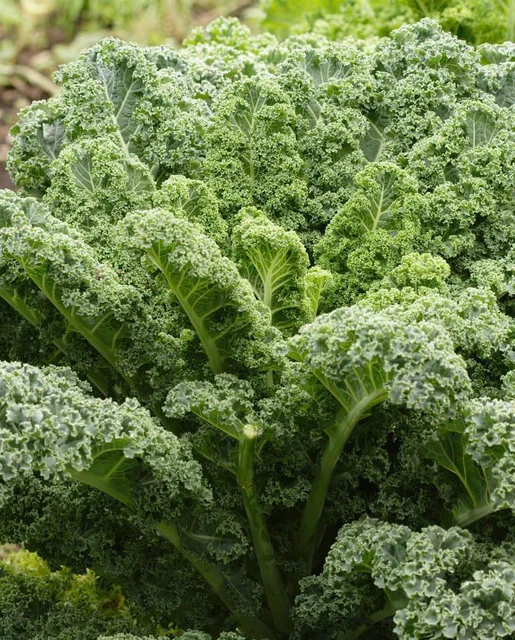
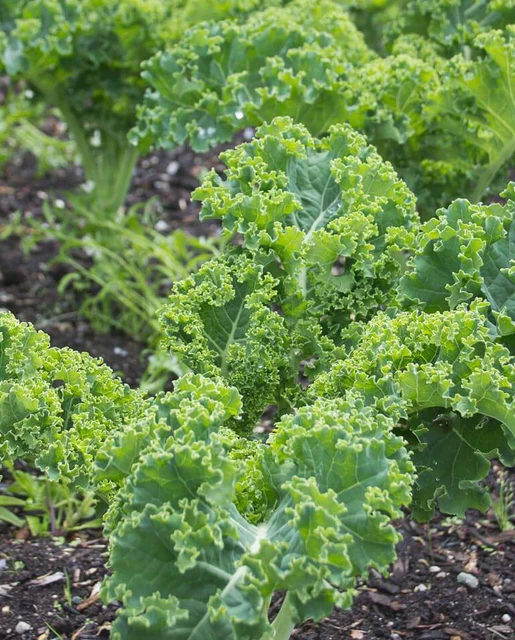
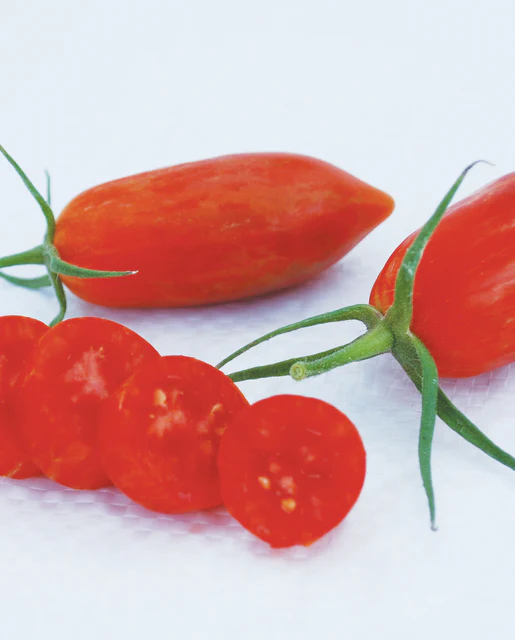
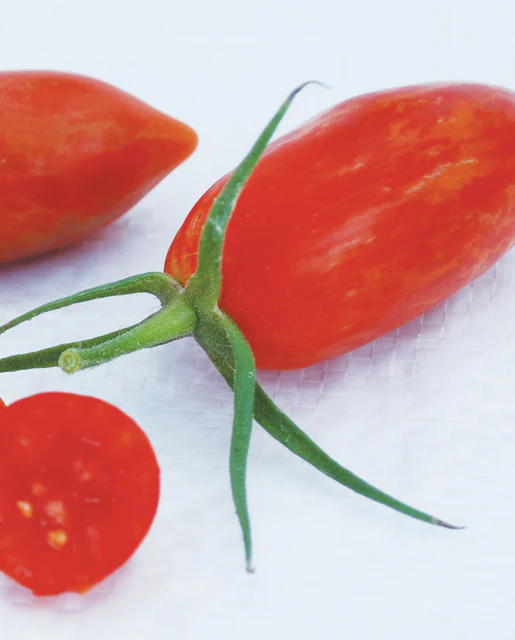

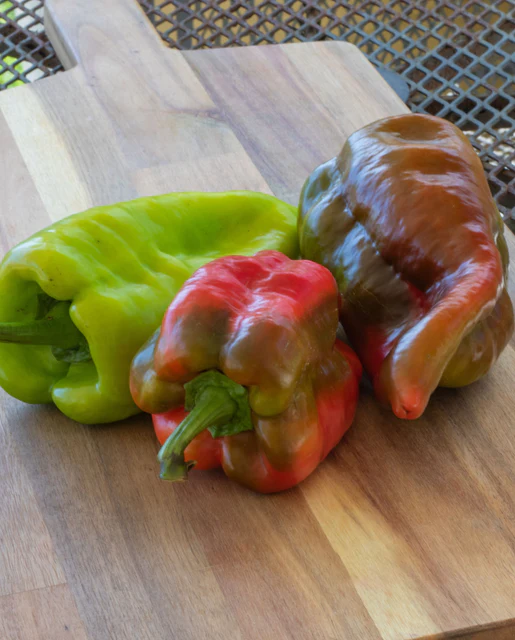
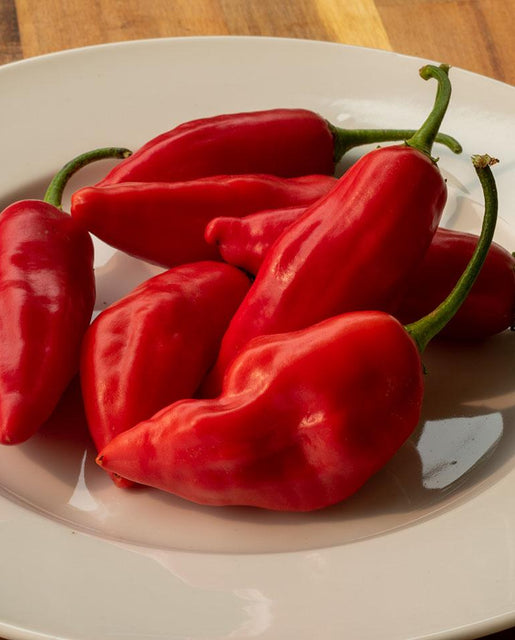
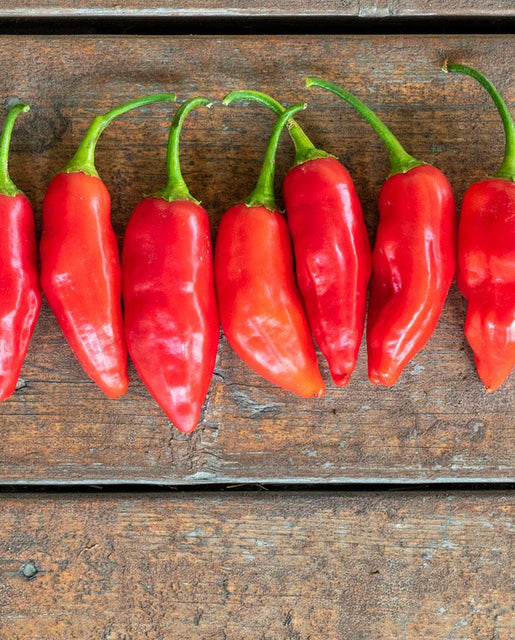




Reviews
There are no reviews yet.